Giotto, Christ washing the Feet of the Disciples, c. 1305, Scrovegni Chapel, Padua.
After a socially distanced Jesus and Mary Magdalene, we arrive at the issue of washing our hands, something I know that, by now, we are all more than used to. Not that we didn’t do it before, of course. I imagine relatively few of us would have had our hands washed by others, though, and I’m sure I can exclude the feet, too. And yet that is the subject of today’s picture.
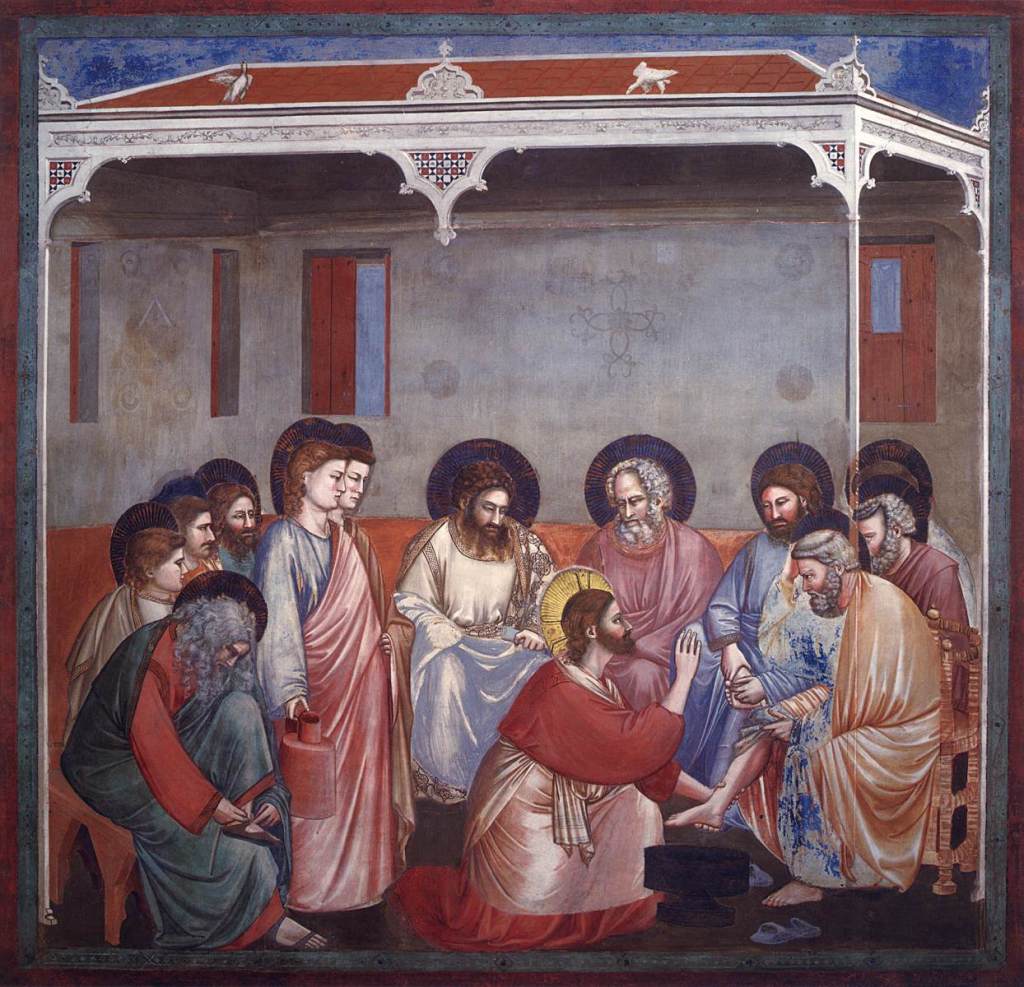
We are in exactly the same room as we were last week (103), a simple, rectangular room, cut away on two sides so that we can see in, with two windows on each remaining wall, those most clearly visible open to the same degree in each picture. The roof has terracotta tiles, and the eaves are decorated with carved friezes, pinnacles and two stone birds, as well as mosaic elements bracketing the supports and hanging down in the centre. The walls are lightly patterned in the same way in each image (I’ll show you them together below) with geometric motifs, mainly circles. The main difference, then, is the action – the dining table has been cleared away (one advantage of such open walls), as has the bench at the front. Or rather, as we’ll find out, they haven’t yet been moved in. The benches at the back and left walls remain, and there is a new seat at the front left, on which St Andrew sits fastening his left sandal. Opposite him, on the far right, on another ‘new’ chair, is St Peter, looking grumpy (again) and looking at Jesus, who kneels before him, holding one of his legs. Two younger apostles stand behind Jesus, one of whom holds a large jug of water, with seven more apostles seated around the benches against the walls.
As so often in the Scrovegni Chapel the details are drawn mainly from the Gospel of St John – this is 13:4-5:
4 He riseth from supper, and laid aside his garments; and took a towel, and girded himself. 5 After that he poureth water into a bason, and began to wash the disciples’ feet, and to wipe them with the towel wherewith he was girded.

You can see in this detail that he has ‘laid aside’ his blue cloak (not that it’s visible anywhere in the picture), and is just wearing the red robe that we usually see underneath, and is ‘girded’ with a white towel around his waist. The ‘bason’ – or basin – was applied, like the haloes, with silver leaf, and, like them, has now tarnished. Peter has removed his sandals – one lies just beneath his left foot, and the other is tucked behind the ‘bason’ (I’m quoting the King James Version as always) in a lovely example of naturalistic depiction. Also rather lovely is the delicate way with which Jesus holds Peter’s leg, and some more naturalistic observation – the precise fall of light and shade on Peter’s calf. Giotto then starts to play: the apostle behind has removed his sandals, has one foot up on his knee, and is scratching between the toes. His other foot remains on the ground, with the toes poking out just under Peter’s right foot – in the same way that Jesus’s fingers do a little further up. Jesus’s blessing hand is neatly framed by this apostle’s knee. Peter lifts up his worn blue robe with his left hand to keep it dry, and scratches his head with his right – he is clearly confused. Indeed, in John 13:6 he asks Jesus, ‘Lord, dost thou wash my feet?’ – the confusion which leads to the gesture. A few verse on it continues:
8 Peter saith unto him, Thou shalt never wash my feet. Jesus answered him, If I wash thee not, thou hast no part with me. 9 Simon Peter saith unto him, Lord, not my feet only, but also my hands and my head.
There is more that is relevant both before and after these verses, of course, but I have always loved this particular part of the exchange. The character of St Peter is so clearly defined in the Gospels as entirely human, and this is one of the best examples. First he says ‘Thou shalt never wash my feet’ but as soon as Jesus says, ‘If I wash thee not, thou hast no part with me’, he jumps straight in with, ‘Well, do everything then’ – he is so impulsive, so desperate to be part of Jesus’s life.
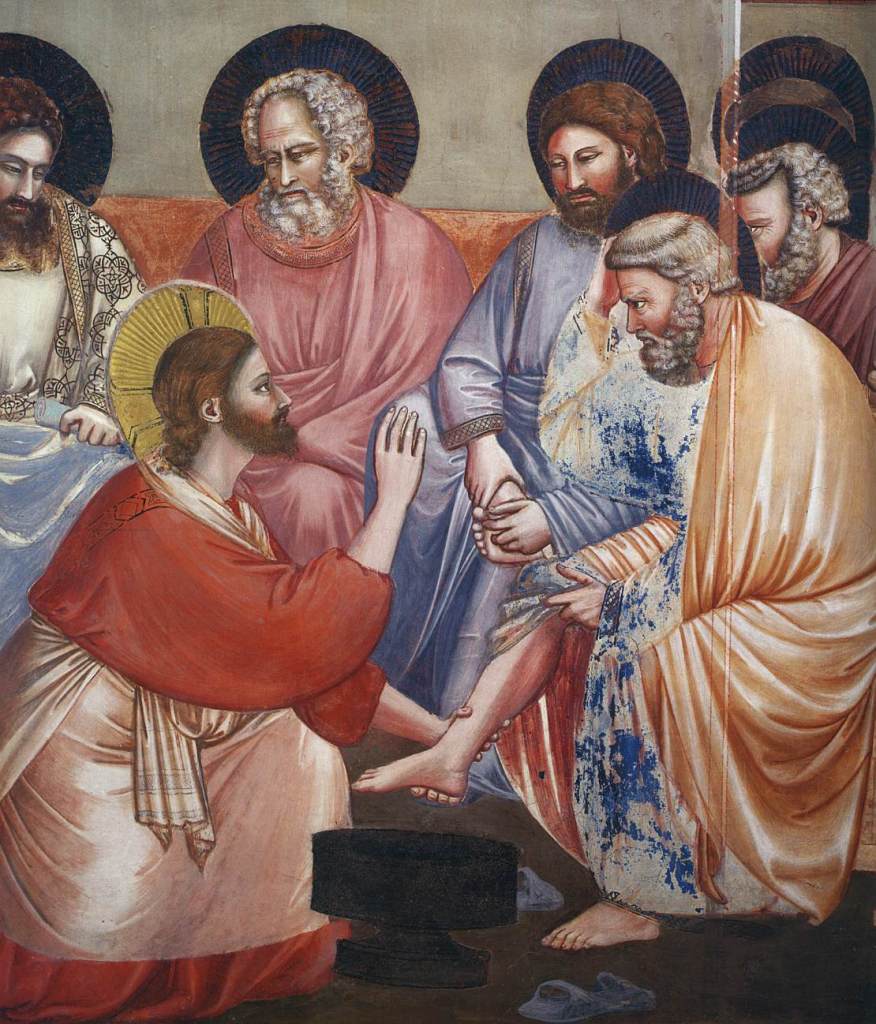
As in The Last Supper the corner pillar clearly caused Giotto some problems. By the looks of it, it was probably painted a secco after everything else, so he could paint Peter and be secure about his position without the pillar getting in his way. Whatever the reason, it has now gone, and has left some gaps in the halos. Either it has flaked less from the halos, or it has affected the way in which they have tarnished. It creates a certain amount of confusion, which is only compounded by Giotto’s rather sophisticated layering of forms. The apostle over Peter’s shoulder has part of his profile hidden by Peter’s halo, and the next apostle back has his entire face eclipsed by the halo of the second apostle – you can just see his hair, framed by his own halo, appearing behind it.
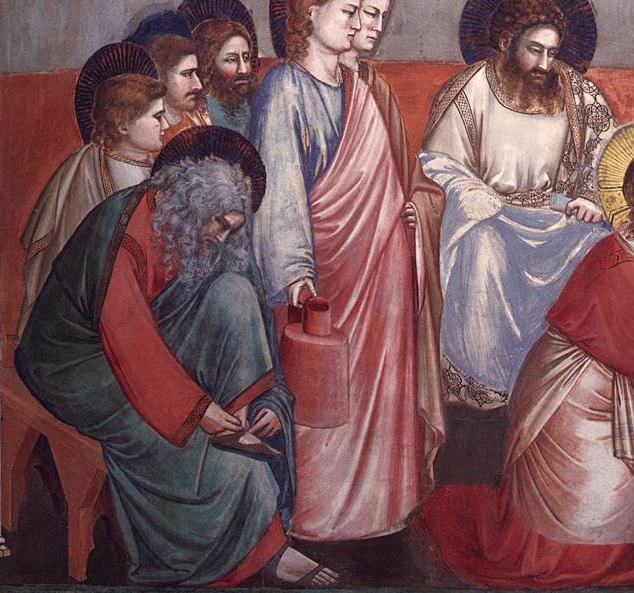
St Andrew, on the far left, can be identified by his clothes and hair, and from his appearance in earlier paintings in the cycle, as he was last week (103). This is such a brilliant piece of painting, I think, with Andrew sat in profile, bending over as his lifts his left foot over his right knee to attach his sandals, his long, wavy white hair and beard tumbling down, the stool he is sitting on carefully depicted in three dimensions. I also love St Bartholomew’s manspreading pose – he sits there in his white robe and patterned cloak with both hands planted on his thighs, one holding a scroll, the other wrapped in his cloak. Three apostles sit against the end wall, in between Andrew and Bartholomew. If you look at their three halos, they are not all the same – those left and right have radiating lines, with a clear, crisp circular edge. The one in the middle has an aura which is dark and nebulous – not tarnished silver leaf like the others. There is just a hint of yellow above Andrew’s halo, and he has a rather large nose. This is Judas, portrayed as he was at the Last Supper. And, if you think about it, it is rather surprising that he should be there, after the Last Supper…
This is how the two images appear on the wall, albeit with a window in between. And, if you think about it some more, they really shouldn’t be in this order at all. Today I have quoted John 13:4-9. Last week, I quoted John 13:23. The events depicted in the picture on the left happened after the events depicted on the right. Jesus washes the disciples’ feet before the Last Supper itself, with its revelation that one of the number will betray him, prompting Judas’s departure. So why has Giotto painted them this way round? Surely, he can’t have got it wrong? No! Of course not! This is Giotto, remember. And this is where the image I showed you last week is really useful… so here it is again.

As I said last week, the altar in the chapel is to our left. Giotto deliberately painted the Institution of the Eucharist – the Last Supper – as close to the altar as he possibly could. Seen from this point of view, when approaching the altar, the Washing of the Feet precedes the Last Supper and reminds the congregation of the need to be pure before partaking in communion, thus relating the Washing of the Feet to the Sacrament of Confession. Just above the Last Supper is the Nativity, and I remember suggesting when we looked at that (POTD 87) that it was as if the body of Christ had been taken from the altar in the chapel. And above that, Joachim is turned away from the altar in the Temple (POTD 66). These three scenes are all included at the far left of the wall not only because that is where the narrative flow would have them, but also because they have a direct relationship to the sacramental nature of the real altar in the chapel to our left. And, actually, the ‘narrative flow’ would not have the Last Supper just here, as it has been swapped with the Washing of the Feet. But there is another, truly brilliant justification of this swap, and one that I have only just noticed. Look at what is above the Washing of the Feet:
OK, so I’ve cut out the window, but this is how the first scenes at the left of the south wall fit together. The Nativity is above the Last Supper, as we have already discussed, but like this it is more clear that the Christ Child is directly above the adult Jesus, and that both are as close to the altar as they can be. And I can’t help but notice that Mary’s loving gaze gives her the same angle of the head, and profile, as that of the sleeping St John, the disciple ‘whom Jesus loved‘. In the next pair, Jesus is directly below the eldest Magus – and both are kneeling. In the Adoration of the Magi the wise men recognise Jesus as the Boy Born to be King – and fulfil the prophecy in Psalms 72:10-11:
10 The kings of Tarshish and of the isles shall bring presents: the kings of Sheba and Seba shall offer gifts. 11 Yea, all kings shall fall down before him: all nations shall serve him.
It was because of these verses that the Magi – the Wise Men – were promoted to the status of Kings – the Nativity story doesn’t mention kings at all. Well, these verses and others in Isaiah, including Isaiah 60:3: ‘And the Gentiles shall come to thy light, and kings to the brightness of thy rising‘. However, Jesus turns all this on its head in John 13:14-15:
14 If I then, your Lord and Master, have washed your feet; ye also ought to wash one another’s feet. 15 For I have given you an example, that ye should do as I have done to you.
Giotto finds the perfect expression for this idea by placing the King kneeling before the infant Christ above Christ kneeling in front of Peter. So here’s your homework for the week: what are the connections between the bottom tier and the middle tier that we will see next week? You’ll need to look at the photo of the South wall above – which is admittedly small. I’m not guaranteeing that there are any, but I have a sneaking suspicion we’ll find something!
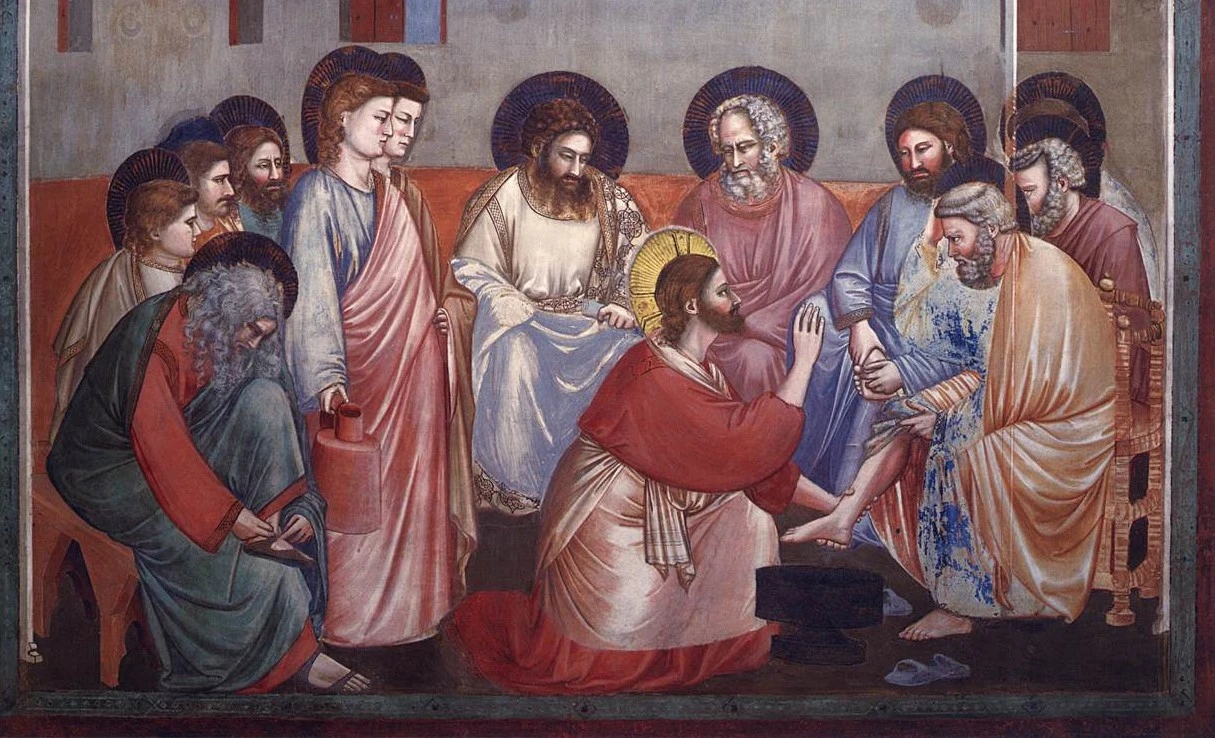
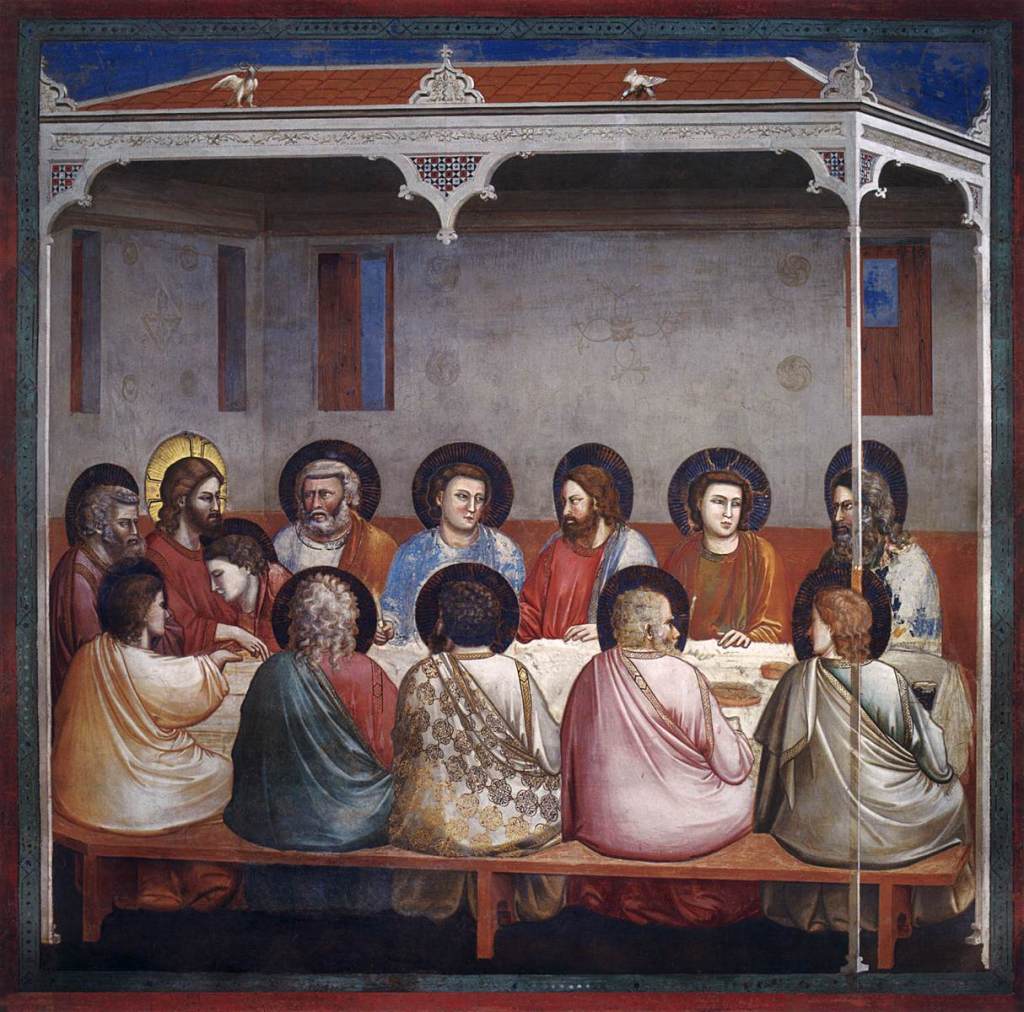
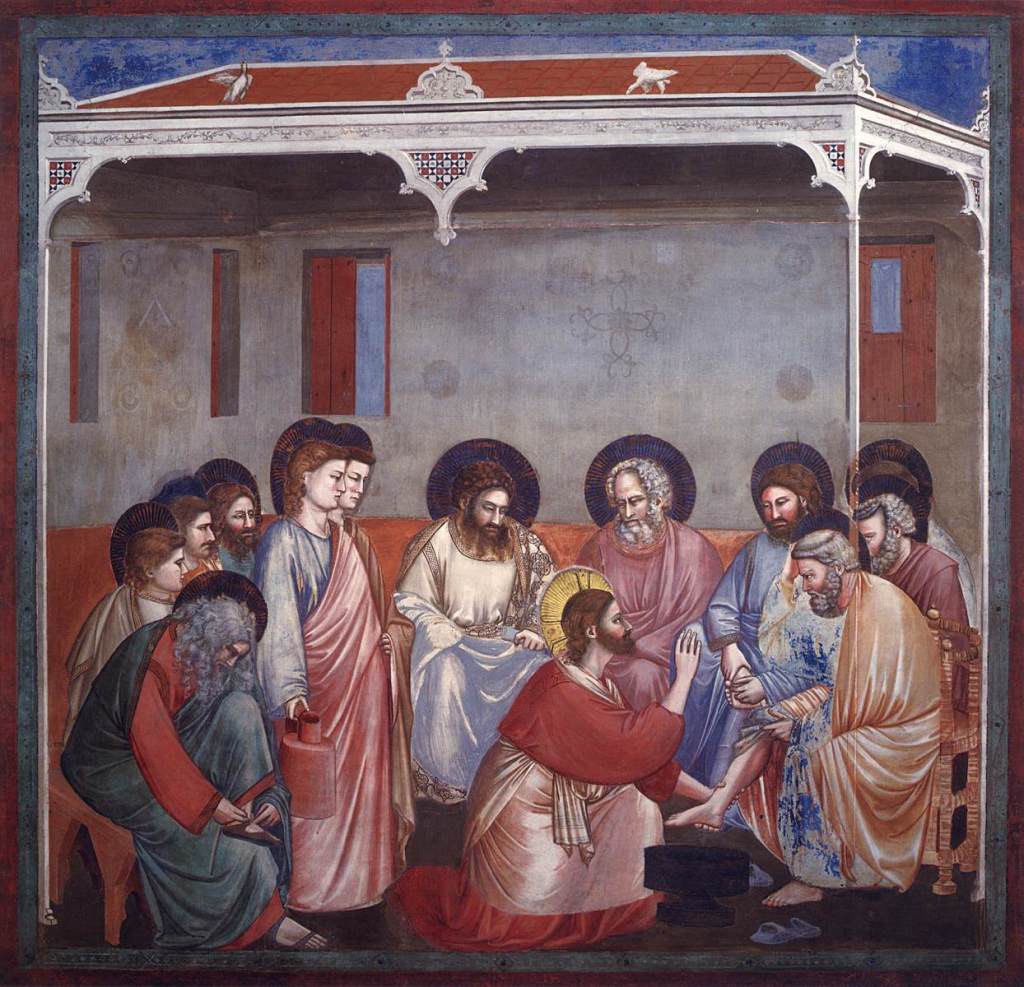
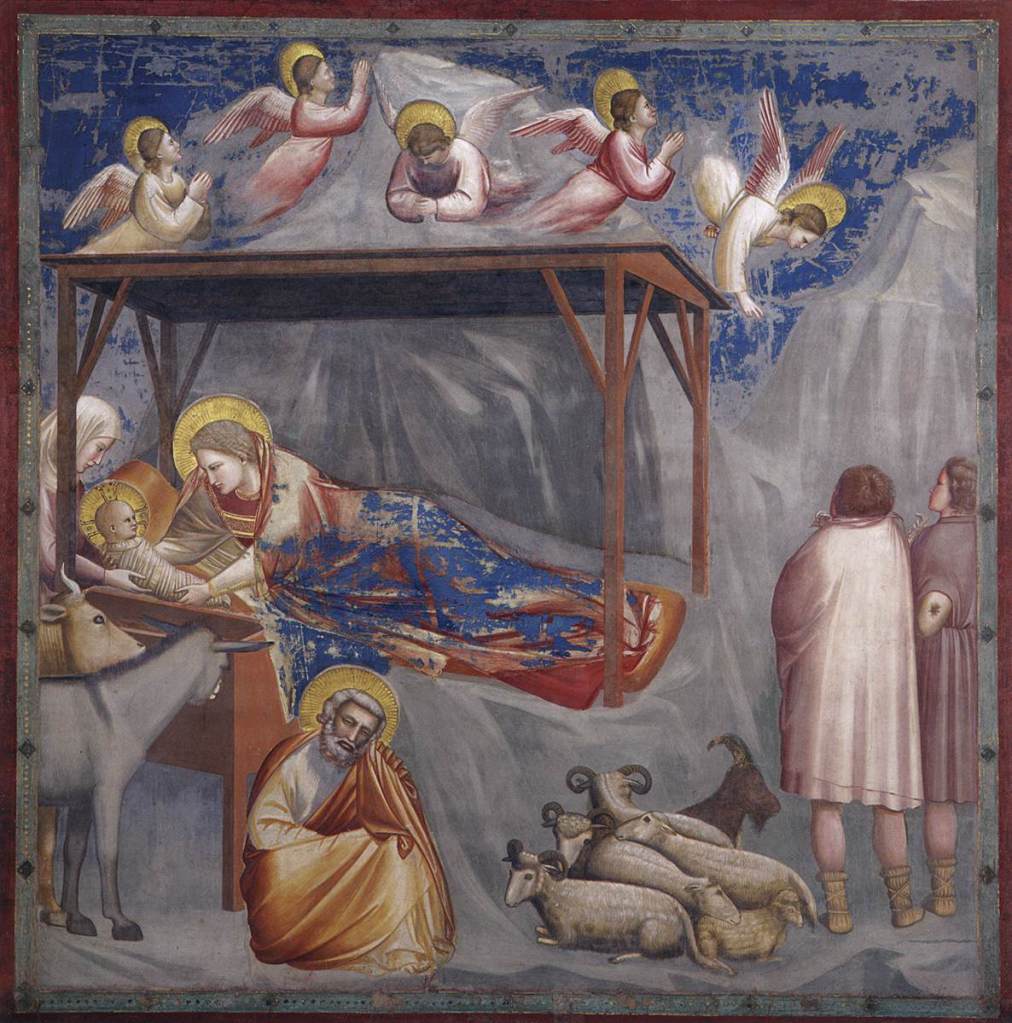
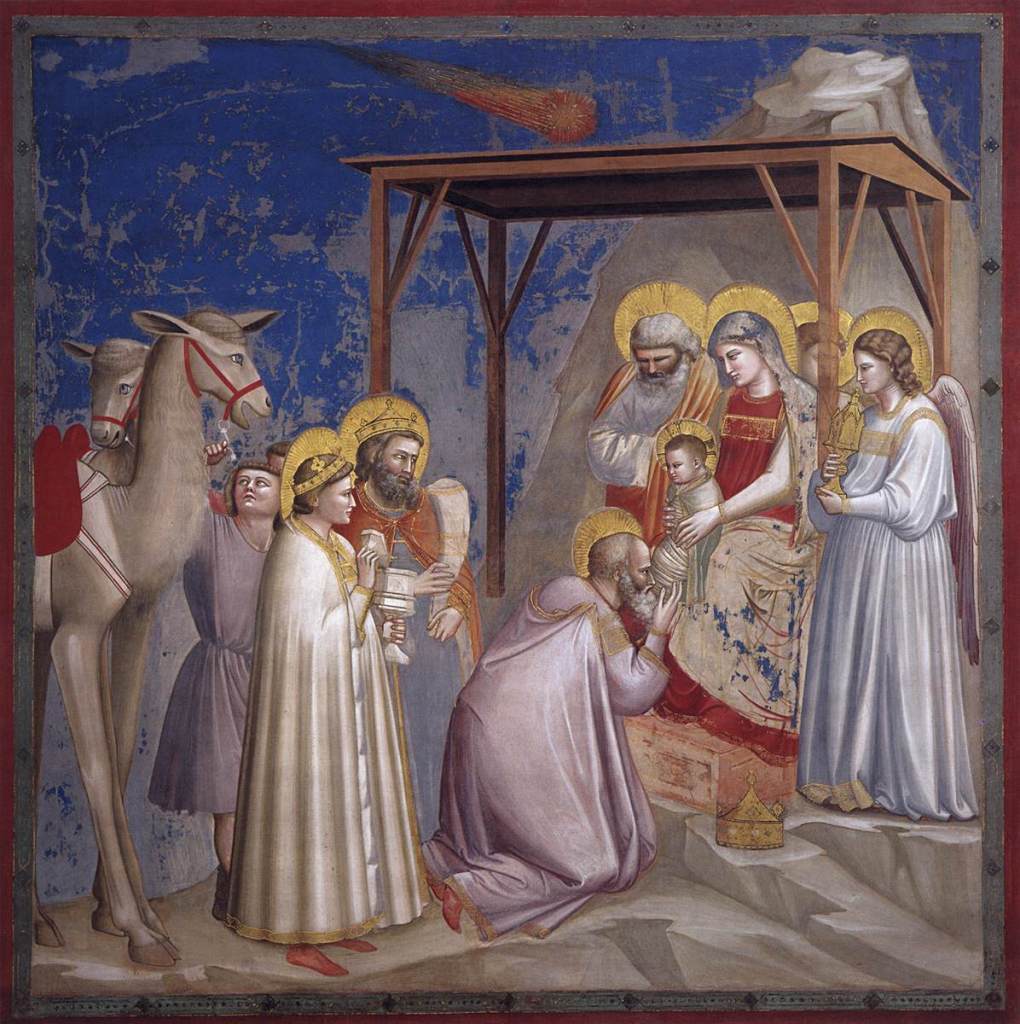

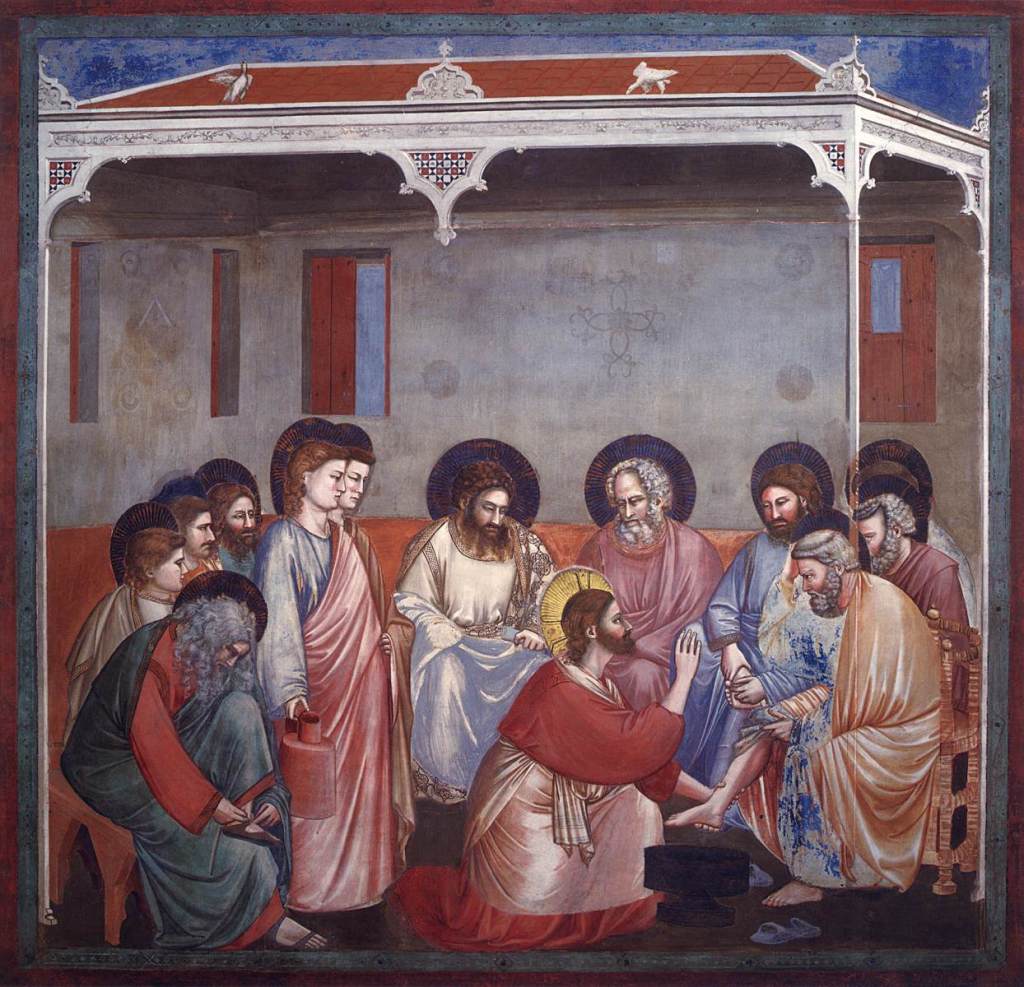
I bet you can answer xx
>
LikeLike
Sorry Richard I think I sent this back to you rather than forwarding to a friend.
Sorry Judy
>
LikeLike
Ah – that makes sense. I wasn’t sure if the other message did. But I found a sense for it….
LikeLike